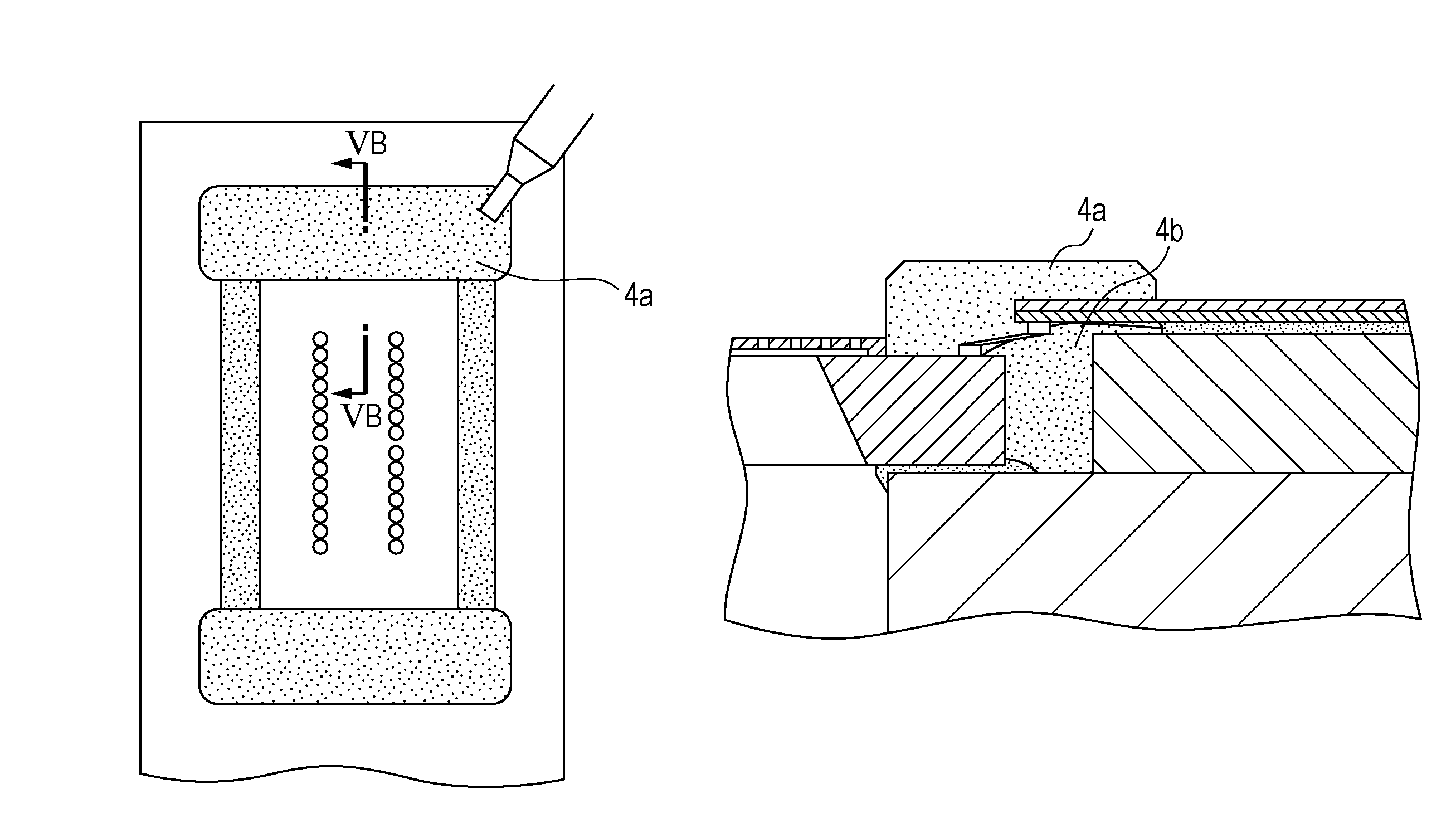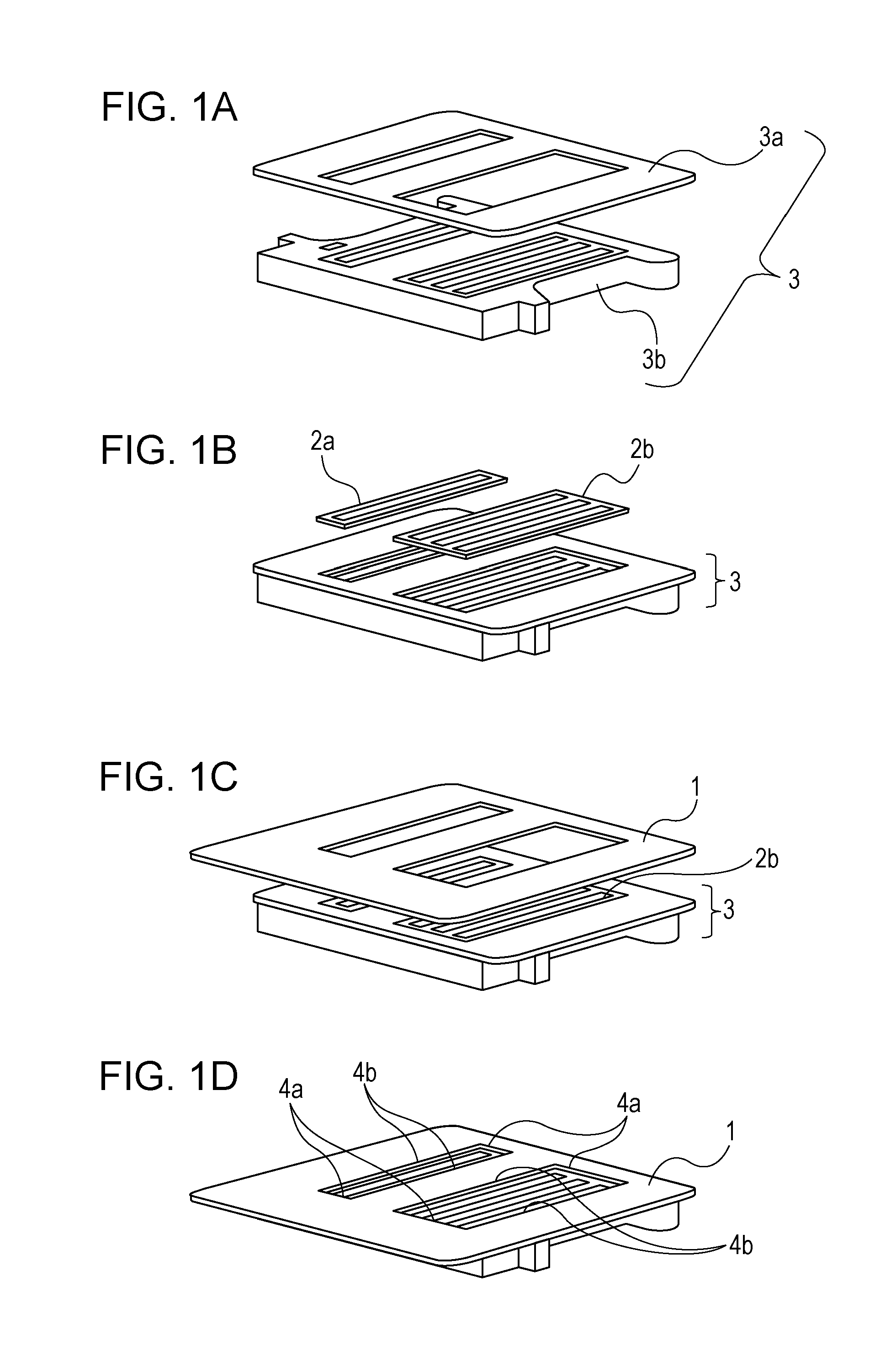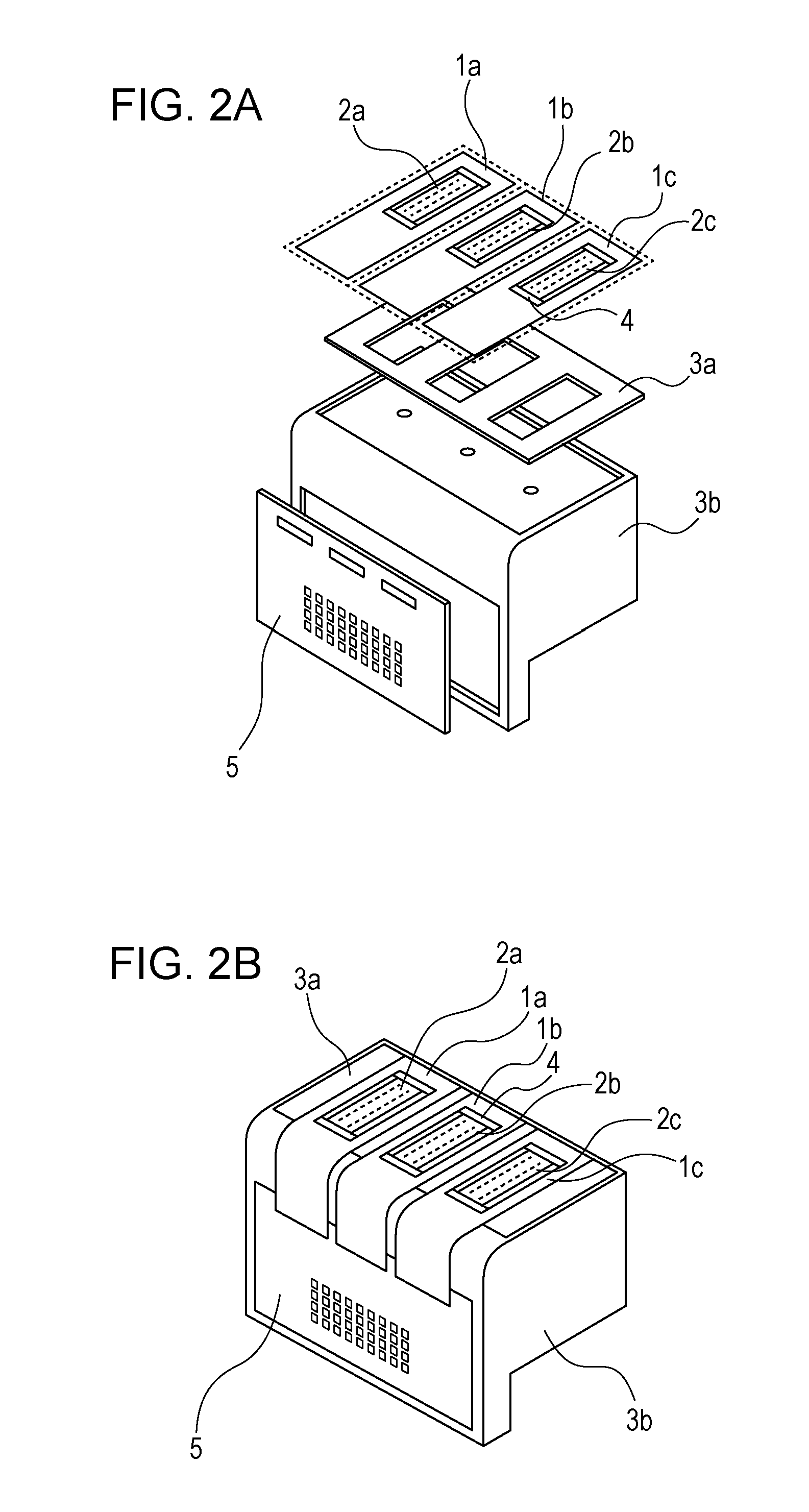Sealant, inkjet recording head using sealant, and method for manufacturing the same
a technology of inkjet recording head and sealant, which is applied in the direction of connection, line/current collector details, printing, etc., can solve the problems of high manufacturing steps, high cationic reactivity, and insufficient sealing of the upper parts of the leads, etc., and achieve high cationic reactivity, high cationic reactivity, and the effect of adjusting the viscosity
- Summary
- Abstract
- Description
- Claims
- Application Information
AI Technical Summary
Benefits of technology
Problems solved by technology
Method used
Image
Examples
examples
[0075]Aspects of the present invention will be described below in more detail on the basis of Examples and Comparative Examples, but it is to be understood that the invention is not limited thereto. In the following description, “part” means “part by mass”.
examples 10 to 18
[0085]Inkjet recording heads of Examples 10 to 18 were fabricated in accordance with the first embodiment shown in FIGS. 3A to 5B. In Examples 10 to 18, the sealants used in Examples 1 to 9 shown in Table 1 were respectively used as the sealant 4a for sealing the upper side of the lead. Furthermore, CV5362 (trade name; manufactured by Panasonic Corp.) was used as the sealant 4b for sealing the lower side of the lead. In these Examples, the sealants were applied such that the thickness from the upper surface of the wiring substrate had the same value (400 μm). Each of the sealant on the upper side of the lead and the sealant on the lower side of the lead was irradiated with ultraviolet light immediately after application. The conditions for ultraviolet light irradiation for all were set at 150 mW / cm2×20 seconds. After confirming that the surface of the sealant on the upper side of the lead was cured, heating was performed at 150° C. for 3 hours.
[0086]In order to evaluate bond reliabi...
PUM
| Property | Measurement | Unit |
|---|---|---|
| thickness | aaaaa | aaaaa |
| energy | aaaaa | aaaaa |
| activation energy | aaaaa | aaaaa |
Abstract
Description
Claims
Application Information
 Login to View More
Login to View More - R&D
- Intellectual Property
- Life Sciences
- Materials
- Tech Scout
- Unparalleled Data Quality
- Higher Quality Content
- 60% Fewer Hallucinations
Browse by: Latest US Patents, China's latest patents, Technical Efficacy Thesaurus, Application Domain, Technology Topic, Popular Technical Reports.
© 2025 PatSnap. All rights reserved.Legal|Privacy policy|Modern Slavery Act Transparency Statement|Sitemap|About US| Contact US: help@patsnap.com



